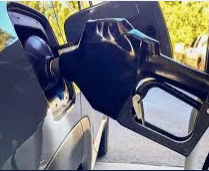The national average price for a gallon of gas rose 8 cents on the week to reach $3.27, while the average price in Kentucky doubled that climb, going from $2.92 a week ago to $3.08 today―a 16-cent climb.
The current national average is the highest price since October 2014 and is primarily due to the surging price of crude oil, which crept above $80 a barrel before edging slightly lower.

“The key driver for this recent rise in the price of gas is crude oil, which typically accounts for between 50% and 60% of the price at the pump,” said Lori Weaver Hawkins, public and affairs manager, AAA Blue Grass. “And last week’s decision by OPEC and its oil-producing allies to not increase production further only exacerbated the upward momentum for crude oil prices.”
Crude prices rose quickly following the decision of OPEC, Russia, and their allies (collectively known as OPEC+) not to move forward with an agreement to produce 800,000 barrels per day in November. Instead, OPEC+ decided to maintain a previously agreed upon 400,000 barrels per day production increase.
According to new EIA data, total domestic gasoline stocks increased by 3.3 million barrels to 225.1 million barrels last week. Gasoline demand also increased slightly, from 9.40 million barrels a day to 9.44 million barrels a day. The slight increase in gas demand aided in the national average’s rise. However, the main culprit for rising pump prices remains high crude prices above $74 per barrel.
Meanwhile, a breach and spill in a key pipeline supplying fuel to parts of the southeastern U.S. led to tightened regional supplies. Kinder Morgan Inc. (KMI) said it expected repairs to its southeastern products pipeline to be completed October 9, with a restart afterward. The repairs were slowed by the recent heavy rain and flooding around Birmingham, Alabama. The spill took place on October 1. The pipeline serves various metropolitan areas, including Birmingham, Alabama; Atlanta, Georgia; Charlotte, North Carolina; and Washington, D.C.
Today’s national average of $3.27 is 10 cents more than a month ago, $1.09 more than a year ago, and 63 cents more than this time of the year during pre-pandemic 2019.
Kentucky’s average of $3.08 is 18 cents more than a month ago, $1.08 more than a year ago, and 72 cents more than this time of the year during pre-pandemic 2019.

Quick Stats
• The nation’s top 10 largest weekly increases: Washington, D.C. (+17 cents), Kentucky (+16 cents), Indiana (+15 cents), Florida (+13 cents), Michigan (+12 cents), Alabama (+12 cents), Tennessee (+12 cents), South Carolina (+11 cents), Illinois (+10 cents), and Delaware (+10 cents).
• The nation’s top 10 most expensive markets: California ($4.44), Hawaii ($4.12), Nevada ($3.87), Washington ($3.85), Oregon ($3.75), Idaho ($3.72), Alaska ($3.71), Utah ($3.70), Colorado ($3.52) and Wyoming ($3.51).
Prices at the pump take big jumps across the Bluegrass
Gas prices across Central Kentucky continued to rise over the past week, breaking from the expected seasonal decline seen this time of year, due to the continued escalation of crude oil prices.
In Lexington, the average gas price sits at $3.13, shooting up 18 cents from this time last week. The current average for Lexington is 22 cents higher than a month ago and up $1.13 from a year ago when the pandemic still had many people staying home.
Oil Market Dynamics
At the close of Friday’s formal trading session, WTI increased by $1.05 to settle at $79.35. Alongside the actions of OPEC+ last week, prices increased after the U.S. Department of Energy dispelled speculation that the Biden Administration would ban crude exports or sell crude oil held in the U.S. Strategic Petroleum Reserve. The sale could have put more crude into the domestic market, but it is unlikely to have had a sustained downward impact on oil prices. Prices have increased last week despite EIA’s latest report showing that total domestic crude inventories increased by 2.4 million barrels to 420.9 million barrels last week. For this week, crude prices could continue to climb if supply tightens.
AAA






















